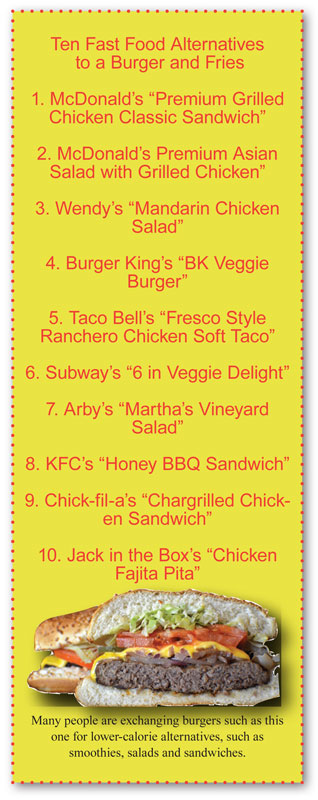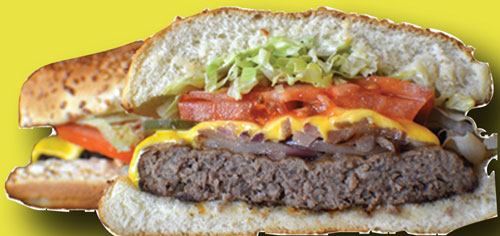Healthy fast food: you can have it your way
Jennifer Ferguson
The Signal

Following recent health trends in the past few years, early last month Burger King released a variety of “better for you options” based on the findings of a year-long study of their entire operations.
The recent expansion, which introduced 10 new options, is the largest development to Burger King’s menu since the corporation opened its doors in 1953 in Jacksonville, Fla. The new options include white meat tenderloins, three salads, two wraps, two fruit smoothies and two flavored frappes.
“We spent the last year analyzing every aspect of our business to better understand what our guests expect from the Burger King dining experience,” said Steve Wiborg, president, North America, Burger King Corp., in a press release from early April. “We found that consumers wanted a broader range of menu options to complement our signature fire-grilled burgers. This expanded menu gives consumers more choices and more reasons to visit Burger King Restaurants.”
The chain also launched a series of new marketing campaigns, which include celebrities such as Jay Leno and David Beckham. Additionally, the King intends to revamp his image by modernizing the décor of his restaurants within the next three years. These changes will include modifications to the interiors, menu boards, employee uniforms and food packaging.
While Burger King just recently added a number of lower-calorie creations, several other fast food chains have previously altered their menus to accommodate healthier eating options. The question is, are these healthy options actually living up to their advertising claims?
While numerous studies have confirmed the correlation between America’s obesity issues and the prevalence of fast food in our diets, statistics still show that more than 40 percent of our currency is spent on meals prepared away from home. The 2010 Consumer Expenditure Survey states that amount is roughly $2,505 annually for the average Joe.
Seeing as how Americans are aware of the negative health risks associated with this type of dining, why is it that, on average, about 6 percent of income is spent on these foods?
“Busy lifestyles have made [Americans] dependant on convenience foods,” said Denise Cazes, UHCL health and nutrition educator, and personal weight loss counselor. “Fast food makes it so easy for us; it’s quick, most find it tasty and it’s on every corner, but it’s loaded with fat, sodium and sugar. Our lack of awareness of just how bad fast food is leaves us at a disadvantage.”
Moreover, with the addition of dollar menus and other low-budget items, the decision to visit the local drive thru is often lighter on consumers’ pockets than their waistlines.
Currently, 63 percent of Americans are overweight or obese. A survey conducted by Calorie Control Council found that while 45 percent of adults lost weight in the past 12 months, only a third was able to keep off the weight.
Still, it is apparent that consumers are insisting on lighter, leaner counterparts to their run-of-the-mill fast food favorites. These trends suggest that Americans have become more health conscious in recent years.
What about Burger King’s new menu additions? Are these and similar products likely to influence a change in these staggering statistics?
“Although many fast food restaurants now offer ‘healthy choices,’ often these options come bundled with other items that are not so healthy,” said Dr. Rebecca Lee, director of the Texas Obesity Research Center. “As an example, you can get a reasonably health-conscious sandwich at Subway, but there is a promotion to make it a full meal by adding a soda and chips, thereby negating the health-promoting aspects.”
Nonetheless, fast food is not the only indicator in the health predicament we face. There are a number of other factors that contribute to the obesity issues in the U.S., including inactivity and overeating.
“The number one cause of obesity in the United States is eating too many calories and not exercising enough… so it’s not just fast food, but it’s all food,” said John Foreyt, director of the Behavioral Medicine Research Center at the Baylor College of Medicine.
Here is even more fast food for thought: the ingredients used to make these alternative menu options are still comprised of the same processed meats and cheeses that constitute the traditional fast food market. The difference is in the preparation.

